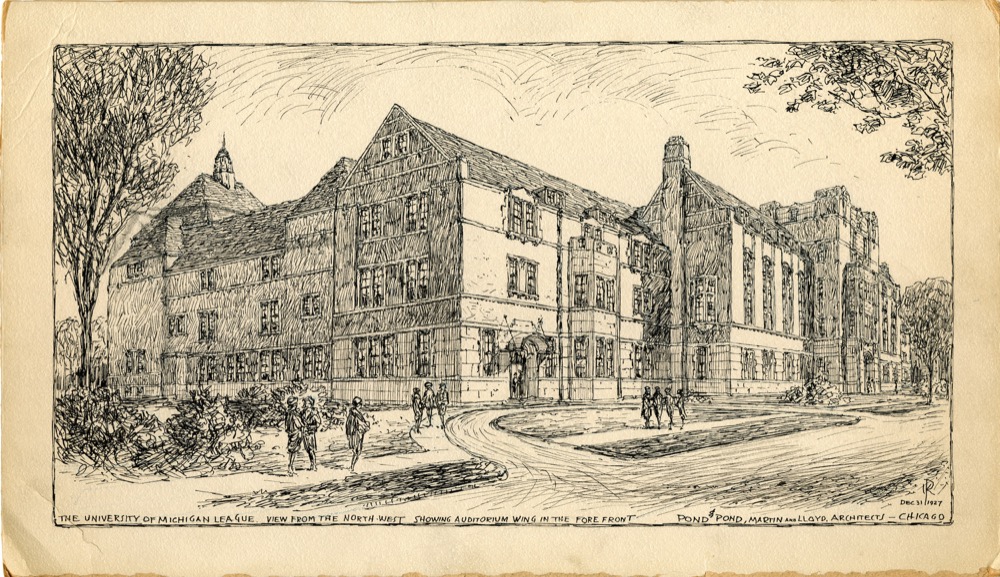 Constructing Gender: The Origins of Michigan's Union and League illuminates the architecture and bustling student life of these iconic buildings using original drawings, renderings, photographs, color studies, and even dance cards from the Bentley Historical Library, which serves as the University of Michigan archives. These fascinating documents reveal how the buildings were conceived, constructed, and first occupied by students and alumni.
Constructing Gender: The Origins of Michigan's Union and League illuminates the architecture and bustling student life of these iconic buildings using original drawings, renderings, photographs, color studies, and even dance cards from the Bentley Historical Library, which serves as the University of Michigan archives. These fascinating documents reveal how the buildings were conceived, constructed, and first occupied by students and alumni.
Since they officially opened in 1919 and 1929, respectively, the Union and League (right) have been destinations for generations of Wolverines yet few know the rich history of the buildings’ origins or about the architects who brought them both to life: brothers and U-M alums Irving K. and Allen Pond.
Guest curated by Nancy Bartlett, Associate Director of the Bentley Historical Library, the exhibition reveals how the Ponds meticulously conceived and constructed the two club houses—one for men, one for women—by weaving ideas about gender and society into the very fabric of the buildings themselves.
“The Union and the League were as central to the student experience then as Michigan Stadium is today,” Bartlett says. “By knowing that these buildings were designed by the same architects, one can look more closely at their similarities and their differences. By knowing that women were not allowed to enter the front of the Union until 1956, one can ask larger questions of inclusion and exclusion.”
Doug Hanna, University Architect at the University of Michigan, says that the Union and League have held up well over time because of the quality construction materials used, and remain flexible spaces for changing needs.
“They are stately spaces that continue to function just fine,” Hanna says.
Because of lower labor costs in the early 1900s, Hanna says the University was able to afford elaborate detail work in the Union and League—such as terrazzo floors and wood panelling—that often makes updates to the buildings harder to accomplish in modern times, and on modern budgets.
The Pond brothers used those design details to map out the separate uses for each building, Bartlett says.
“They aimed for buildings that were not only functional but also inspirational,” she says. “What may seem alien today are the architects’ intentional distinctions of highly gendered uses of the Union and the League.”
Constructing Gender is one of several exhibitions and events in 2017 celebrating the University of Michigan’s Bicentennial Year, and will run from January 28 to May 7.
Upcoming Exhibition Programs
Constructing Gender: The Architectural Origins of Michigan’s Union and League – Sunday, Feb. 12
In Conversation: Constructing Gender: the Origins of Michigan's Union and League – Sunday, Feb. 19

